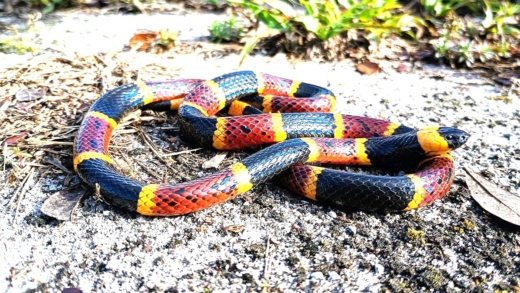This article discusses the proposed cat curfews in Iceland, outlining their purpose, the reasons behind them, and the expected impact on local wildlife. It also addresses community benefits, cat owner reactions, expert opinions, and compares Iceland’s approach with international examples. The article suggests creative alternatives for ensuring cat safety at night, discusses potential exceptions to the curfews, and provides practical tips for cat owners to maintain their pets’ well-being.
Understanding Cat Curfews in Iceland: What Are They?
Cat curfews in Iceland are proposed regulations aimed at restricting the outdoor movement of cats during specific hours, primarily at night. The primary purpose of these curfews is to protect local wildlife and ensure the safety of free-roaming cats themselves. By limiting their outdoor access, authorities hope to reduce the risks associated with predation on birds and small mammals, which are vulnerable during nighttime hours.
These proposed cat curfews involve setting designated hours when cats must remain indoors. The intention is clear: to create a safer environment for both domestic cats and the native wildlife that inhabit Iceland’s unique ecosystems. Implementing such measures is not just about controlling cat populations but also about maintaining ecological balance.
Reasons Behind the Cat Curfews: Why Are They Necessary?
The motivations for implementing cat curfews in Iceland stem from various factors. One significant reason is the alarming impact of free-roaming cats on local wildlife. Studies indicate that cats are responsible for the decline of several bird species and small mammals in urban and rural areas. By enforcing curfews, authorities aim to mitigate these negative effects and preserve biodiversity.
Another reason is to promote responsible pet ownership. Cat curfews encourage owners to take better care of their pets by ensuring they are kept indoors during vulnerable times. This not only protects wildlife but also reduces risks of accidents and diseases that free-roaming cats may encounter. Moreover, public health concerns arise when stray or free-roaming cats proliferate, making curfews a proactive approach to managing community welfare.
Wildlife at Risk: How Do Cat Curfews Affect Local Species?
Free-roaming cats significantly threaten local wildlife in Iceland. They are known predators, capable of hunting various species, including birds, rodents, and even insects. Research shows that cats can drastically reduce populations of these animals, which play crucial roles in the ecosystem. By implementing cat curfews, the aim is to minimize the hunting opportunities that cats have during the night when many species are most vulnerable.
The impact of cat curfews on local species can be profound. For instance, when cats are kept indoors at night, bird populations can recover, leading to healthier ecosystems overall. Additionally, reduced predation pressure allows for a more balanced food web, which benefits all organisms within the habitat.
In conclusion, understanding the implications of proposed cat curfews in Iceland reveals their potential to protect wildlife and promote responsible pet ownership. By addressing the risks that free-roaming cats pose to local species, these regulations could foster healthier ecosystems and communities.
Benefits for Communities: What’s in It for Us?
Implementing cat curfews in Iceland offers various advantages for local communities and wildlife. First and foremost, these curfews aim to protect native species, which often face predation from free-roaming cats. By keeping cats indoors during critical nighttime hours, communities can see a resurgence in local bird populations and other wildlife, contributing to a healthier ecosystem.
Additionally, cat curfews promote a sense of responsibility among pet owners. When cats are required to stay indoors, owners may invest more time and resources into creating engaging indoor environments for their pets. This can lead to:
- Increased safety for cats, reducing accidents and illnesses associated with outdoor roaming.
- Enhanced community pride, as residents contribute to local wildlife conservation efforts.
- Reduction in stray cat populations, alleviating public health concerns associated with feral cats.
Moreover, local businesses may benefit from increased sales of indoor cat products, such as toys and litter boxes, as pet owners adapt to these changes. Overall, the proposed cat curfews can create a more harmonious coexistence between humans, pets, and wildlife.
Reactions from Cat Owners: What Do They Think?
Reactions from cat owners regarding the proposed cat curfews in Iceland vary widely. While some owners express support for the initiative, citing the need to protect wildlife, others voice concerns about their pets’ freedom and well-being. Many cat owners appreciate the focus on wildlife preservation but worry about the impact on their cats’ natural behaviors.
Key points of contention among cat owners include:
- Concerns about indoor boredom and lack of exercise for cats kept indoors.
- Questions about how strict enforcement of curfews will be managed.
- Desire for additional resources to help owners adapt their homes for indoor living.
Some owners are actively seeking solutions to keep their cats entertained indoors, such as interactive toys and climbing structures. Others propose designated playtimes outdoors under supervision as a compromise. Overall, cat owners are looking for reassurance that their pets’ happiness and safety will be prioritized alongside wildlife protection.
Expert Opinions: What Do Specialists Say About Free-Roaming Cats?
Experts in animal behavior and wildlife conservation provide valuable insights into the effects of free-roaming cats on the environment. Many specialists agree that free-roaming cats pose significant threats to wildlife populations. Studies suggest that cats are responsible for the deaths of billions of birds and small mammals globally each year.
Experts emphasize the need for responsible pet ownership and the importance of curfews as a tool for wildlife protection. Key insights include:
- Free-roaming cats disrupt local ecosystems, impacting not just prey species but also their predators.
- Curfews can help mitigate these impacts and foster a more balanced ecosystem.
- Community education on the importance of keeping cats indoors is essential for the success of such regulations.
In summary, expert opinions reinforce the notion that cat curfews could play a crucial role in safeguarding wildlife while promoting responsible pet ownership. By taking a proactive approach, Iceland can protect its unique biodiversity and create a sustainable environment for both cats and wildlife.
International Examples: How Have Other Countries Handled This?
Cat curfews are not unique to Iceland; other countries have implemented various regulations to manage the outdoor activities of cats. For instance, in Australia, particularly in urban areas, strict curfews are enforced to protect local wildlife. Here, cats are required to be indoors from sunset to sunrise, reflecting concerns over the predation of native species such as birds and marsupials.
Similarly, in New Zealand, local councils have adopted policies to limit the movement of cats in specific areas, especially where endangered species are present. These initiatives aim to balance pet ownership with wildlife conservation. In contrast, some countries, like the United States, have a more fragmented approach. Regulations vary widely by state and city, with some places encouraging responsible pet ownership through education rather than imposing strict curfews.
By examining these international examples, Iceland can draw valuable lessons from the successes and challenges faced by other nations. The key takeaway is that community engagement and education are crucial for the effective implementation of cat curfews.
Creative Solutions for Nighttime Safety: Keeping Cats Safe
While cat curfews aim to protect wildlife, there are alternative methods for ensuring the safety of cats at night. One effective solution is to create secure outdoor enclosures or “catios.” These structures allow cats to enjoy the outdoors without posing a threat to wildlife. Catios can be designed to fit various spaces, from small balconies to larger backyards, and can be equipped with ramps, scratching posts, and shaded areas to keep cats entertained.
Another option is to invest in leash training. This allows cat owners to take their pets outside for supervised exploration. Leash training can be a fun bonding experience and allows cats to enjoy fresh air safely. Moreover, providing interactive indoor toys and puzzles can help alleviate boredom and keep cats mentally stimulated when they are kept indoors. Cat owners can also consider installing cat doors that lead to safe outdoor areas for brief periods under supervision.
Exceptions to the Rules: Are There Any Special Cases?
Under the proposed cat curfews in Iceland, there may be exceptions for certain cats, particularly those with specific needs. For instance, older or ill cats might require more flexible regulations that allow them to access the outdoors at different times. Additionally, cats that are part of rehabilitation programs or those used for therapy may also warrant exceptions to ensure their well-being.
It’s essential for local authorities to clearly communicate these exceptions to avoid confusion among cat owners. By allowing some flexibility, the regulations can still achieve their wildlife protection goals while considering the diverse needs of the feline population. Establishing a system for cat owners to apply for exceptions could also foster community trust and cooperation with the curfew regulations.
Tips for Cat Owners: Ensuring Happiness and Safety
For cat owners in Iceland, adapting to proposed curfews can be challenging, but several strategies can help ensure both the safety and happiness of their pets. Here are some practical tips:
- Create a Stimulating Indoor Environment: Use toys, scratching posts, and climbing structures to keep cats engaged.
- Establish a Routine: Regular playtime and interaction can help cats adjust to being indoors more often.
- Provide Safe Outdoor Experiences: Use a leash or catio to allow outdoor time while keeping wildlife safe.
- Monitor Health and Behavior: Pay attention to any changes in behavior or health that might indicate stress or boredom.
- Engage with the Community: Connect with other cat owners to share tips and resources for adapting to curfews.
By implementing these tips, cat owners can ensure their pets remain happy and healthy, even with new regulations in place. Balancing wildlife conservation with responsible pet ownership can create a positive outcome for both cats and the ecosystems they inhabit.





Comments are closed.